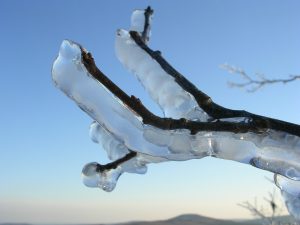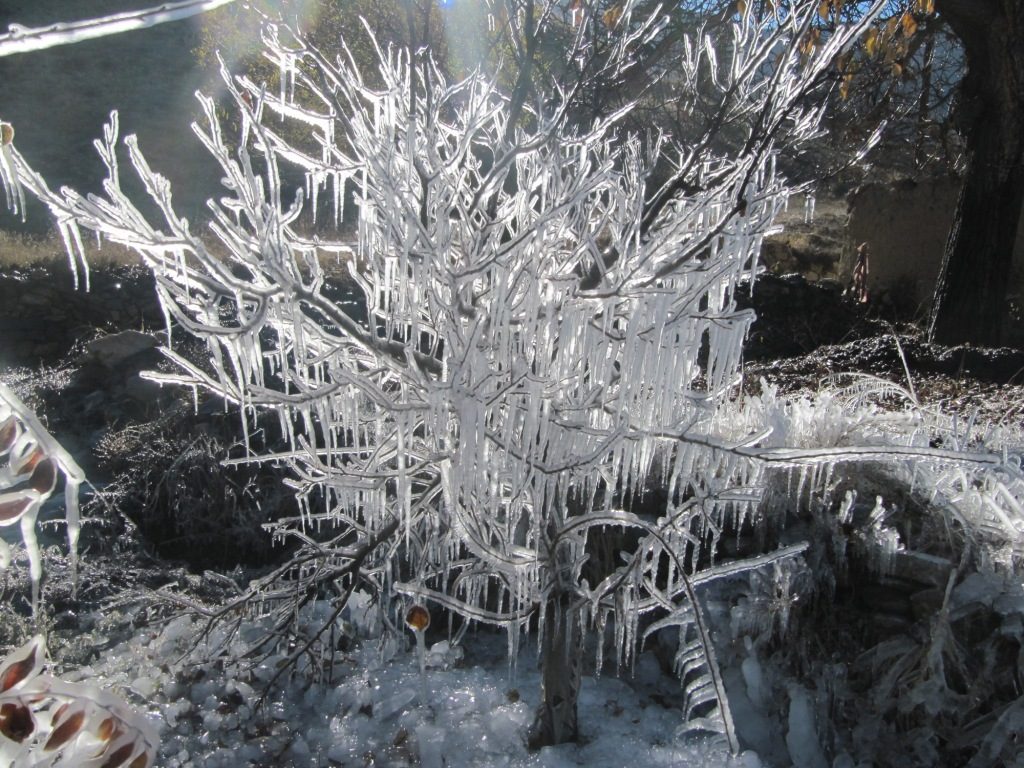Summary:
Ice storms cause severe disturbances that can be detrimental to trees, but ice storms are actually beneficial to long-term forest health and foster biodiversity. By killing higher proportions of dominant tree species, ice storms give non-dominant tree species the chance to grow, thereby maintaining a variety of tree populations in forests.
What are ice storms?
Ice storms occur in cold weather conditions when rainfall freezes over leaves and branches. Ice is very heavy, and can increase a branch’s weight by up to 30 times. This can cause branches or even whole trees to break in many places, ultimately damaging and even killing many trees. Further, ice storms’ impacts can be as severe as the most powerful hurricanes, and can cause 20-40% mortality in trees.
Benefits of Ice Storms

Ice storms benefit forests in two ways: increasing sunlight availability and enhancing species richness. First, when entire trees snap off or branches break, more sunlight can shine through to the forest. Trees need sunlight to photosynthesize, or to make their own food. Therefore, more sunlight means healthier trees. Second, ice storms may change the distribution of tree species. Ice storms reduce the number of dominant tree species, which decreases competition for light in the forest. As a result, non-dominant tree populations can receive more sunlight, which is required for survival. This provide an opportunity to enhance species richness (number of different tree species in the same area) within the forest.
Conifers, like Eastern hemlocks, are more resistant to ice storm damage than hardwoods, like sugar maples. If a forest of predominantly Eastern Hemlocks was largely damaged by an ice storm, other tree species, like sugar maples, would be given the opportunity to grow due to increased space and light availability. Therefore, ice storms help maintain species diversity in forests.
References
Gaige, M. (2013, January 24). Ice Storms: A natural disturbance. Retrieved from http://www.theparklands.org/Blog/33/ICE-STORMS-A-NATURAL-DISTURBANCE
Hauer, R., Hruska, M., & Dawson, J. (1994). Trees and ice storms: The development of ice storm–resistant urban tree populations. Retrieved from http://web.extension.illinois.edu/forestry/publications/pdf/urban_community_forestry/UIUC_Trees_Ice_Storms.pdf
Irland, L. C. (2000). Ice storms and forest impacts. Science Of The Total Environment, 262: 231-242. doi:10.1016/S0048-9697(00)00525-8
Rankin, J. (2015, January 12). How Ice Storms Impact Trees. Retrieved from http://www.adirondackalmanack.com/2015/01/how-ice-storms-impact-trees.html
Image credits:
Tree during an ice storm: "Frozen Tree, Antumn 2010" by Mahdishahr مهدیشهر S is licensed under CC BY-SA 3.0
Detail of frozen branch: "Tree branch after ice storm" by J. Carmichael is licensed by the public domain
